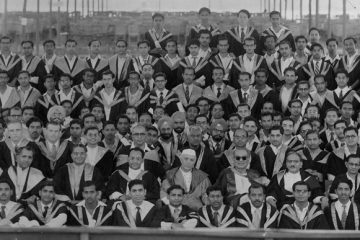
Times of India Kolkata(p1), Kolkata(p4), Delhi, Mumbai, Hyderabad, Bangalore, Chennai, Chandigarh, Goa, Lucknow, Pune, Jaipur, Bhopal IndiaTimes The Week Business Standard TimesNow The Sentinel Assam NewsTrack The Weather Channel Eastern Mirror India.com
In 1993 filmmaker Steven Spielberg told us an exciting story of the dinosaurs and their creation from the blood of mosquitoes in the Jurassic era carrying dinosaur DNA. The DNA was so critical to the story that we saw John Hammond, a lead character, carry it in his walking stick all through the movie. That was few drops of blood and now researchers have found an entire world of rock-dwelling microbes (bacteria and archaea) way back in time from an era when the Earth’s crust was in its early stage of evolution (2.5 billion years to 65 million years).
Life started on our planet in a much hostile environment and even before the great oxidation event (which occurred nearly 2.5 billion years ago). Since its inception, single-celled life forms or microbes have been adapting to the external threats in the environment such as volcanic eruptions, tectonic movements, asteroid shower, ice ages or any other extinction level events thus surviving extreme environments; while simultaneously evolving themselves and leading the planet’s evolution. Today scientists are exploring the depths of the Earth to find traces of such microbes, their life (limits of life, their adaptation) and contribution to planetary and perhaps extra-planetary processes (including carbon and other elements cycling).
Researchers from IIT Kharagpur have discovered microbial (bacterial and archaeal) life forms which were trapped at depths beneath the Deccan Traps, up to 1500 metres below the surface. The Deccan Traps, which cover a large part of the Deccan plateau, originated from massive volcanic activities nearly 65 million years ago and believed to be responsible for mass extinction on our planet. What surprised the research team from the Institute’s Dept. of Biotechnology was the presence of the bacteria and archaea more than a kilometre below the solid igneous rocks of the Deccan Traps without much of nutritional resources (such as water or other materials to feed on).
Microbes are being explored for in several regions in the world with high seismic activities such as San Andreas in California, USA or in South Africa or Germany. The activity of drilling boreholes in seismically active areas was started in India in the late 1960s’ to study the geophysical properties of the rocks for various civil and structural reasons. In the seismic zone of the Koyna region of Maharashtra (well known for its Reservoir Triggered Seismicity or RTS), 9 such exploratory boreholes to a depth of ~1.5 km were drilled by the Ministry of Earth Sciences, Govt. of India.
In 2014, Prof. Pinaki Sar from the Dept. of Biotechnology at IIT Kharagpur initiated this path-breaking research to study the geomicrobiological properties of these rocks which remained disconnected from the Sun-lit surface environment rich in oxygen, water, organics and light to drive photosynthesis. Rock cores retrieved from 3 such exploratory boreholes were sampled for this geomicrobiological investigation.
Recently, Prof. Sar’s team confirmed the presence of traces of bacterial life forms through the Deccan Traps upto 3 km depth of the boreholes which were touched the granitic basement formed as continental crust billions of years ago. The Deccan volcanism started about 65 million years ago and may have continued till 60 million years ago. However, these volcanic activities happened with several thousand years of time gap which might have allowed early microorganisms to occupy such extreme habitats. In spite of the severe scarcity of nutrients and prevalence of recurrent extremities, how these organisms managed to sustain their survival and eventually populated the entire underworld of continental crust remains an open question. The researchers suggest that the microbes may have moved down to the lower strata of the Earth through water flow through fractures (formed due to seismic activities) formed in geologic past.
“We cannot confirm at the moment whether the organisms are still alive though we have been able to make the endolithic cells grow in as enriched laboratory cultures”, however, there could be chances of contamination during the process of handling the rocks or downstream activities” added Prof. Pinaki Sar.
These microorganisms also termed as extremophiles have adapted to survive in a biologically energy poor system i.e. lack of sunlight, water, oxygen and other gases. It could be possible they were harvesting the geogenic energy of the Earth by oxidizing hydrogen or carbon dioxide derived from the inner core of the crust.
“Our study has proved that the common perception of survival of life and the scientific findings differ and these deep biosphere microorganisms could give us an idea about how best other carbon and inorganic sources can be used,” said Prof. Sar.
So can the organisms convert carbon dioxide or methane molecules to more useful products? Maybe scientists can pursue further research to explore the features of these deep Earth microbes in addressing issues such as pollution, drug discovery, new nutrients or biocatalysts, alternate energy resources or finding life in another planet. It could also be possible that deep life enthusiasts propose an enthralling idea in the likeness of John Hammond, only future can tell. “Our study showed that even in energetically highly constrained, deep crystalline igneous Earth crust of Deccan Traps, microbial life evolved and persisted,” said Prof Sar.
“Study of microbial life and its diversity deep inside the Earth has engaged the attention of scientists for a variety of reasons including finding the temperature limit of life. Sampling the fluids and rocks at extreme conditions of temperature and pressure requires access to the deep, dark realms of the Earth. Studies on deep life, therefore, bring about an exciting new perspective to scientific deep drilling programmes that are usually undertaken to study earth processes. This first report on ancient granitic and basaltic rock samples in the Deccan Traps will set the pace for new interdisciplinary research in the country”, said Dr Sukanta Roy, Project Director at the Ministry of Earth Sciences, Borehole Geophysics Research Laboratory, Karad who supervised the scientific drilling investigations.
These exciting explorations not only expand our knowledge of deep life but along with other international studies provides new insights into ‘planetary habitability’, allowing us to gain a better understanding on how life emerged on our planet and if life persists in the Martian subsurface and other planetary bodies.
This is the first time that such deep life underneath the Earth has been explored from India and by an initiative led entirely by Indian scientists, opined the proud faculty from IIT Kharagpur whose research findings have been reported in Scientific Reports.
Photo Credit: Suman Sutradhar, Laboratory of Prof. Pinaki Sar



